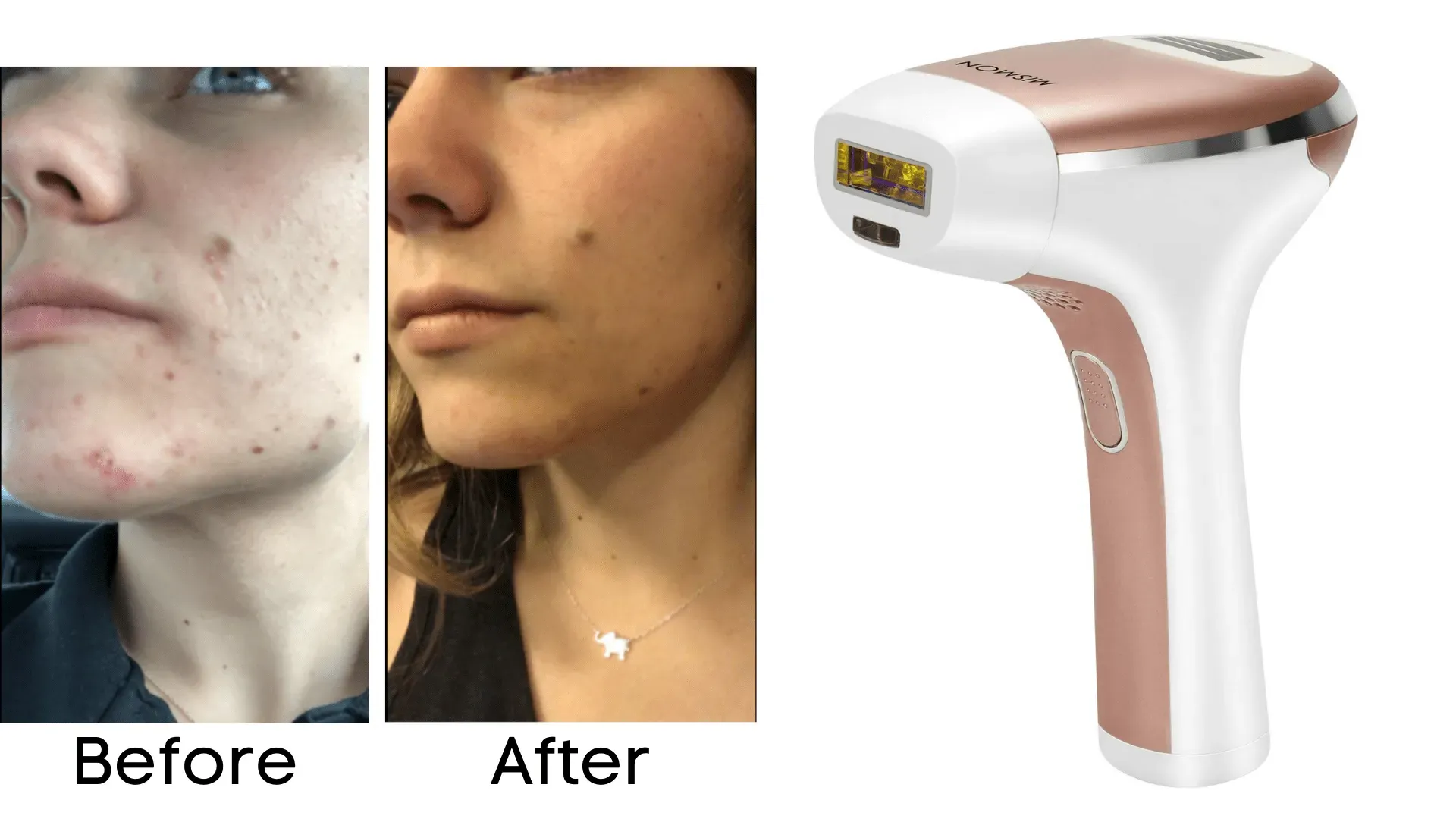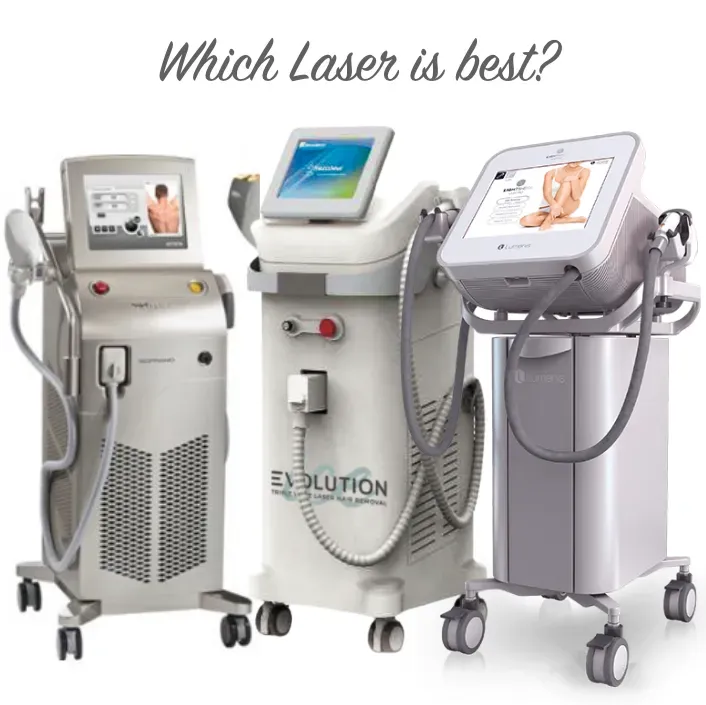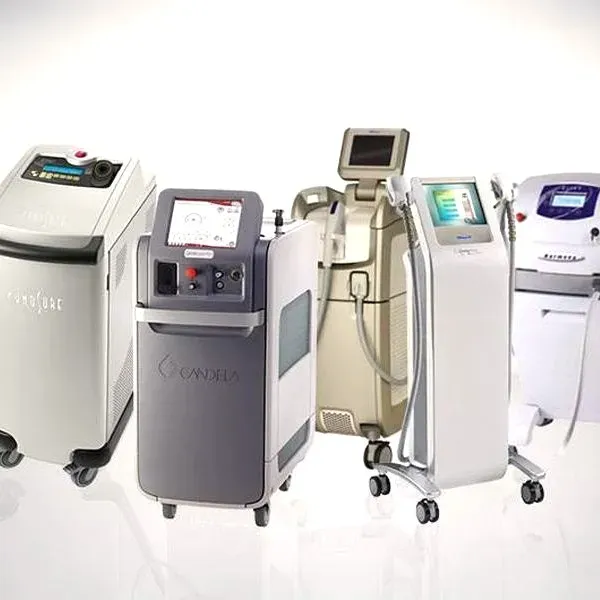Table of Contents
Tired of the endless cycle of shaving, waxing, and plucking? You know the drill. Razor burn, ingrown hairs, the sheer time suck of it all. It’s enough to make anyone consider a more permanent solution. Laser hair removal pops up as the golden ticket, promising smooth skin without the daily hassle. But step into the world of lasers, and suddenly you're faced with acronyms and tech jargon that sound like something out of a sci-fi movie. Diode? Alexandrite? Nd:YAG? How do you even begin to figure out the **best laser for laser hair removal** for *your* specific situation?
Understanding Your Skin and Hair: Key to Finding the Best Laser for Laser Hair Removal

Understanding Your Skin and Hair: Key to Finding the Best Laser for Laser Hair Removal
Why Your Skin Tone Matters (A Lot)
let's cut to the chase. Not all skin is created equal when it comes to laser hair removal. The biggest factor determining which laser is safe and effective for you is your skin tone. We're talking about the Fitzpatrick scale here, that fancy chart doctors use to classify how your skin reacts to sunlight. Type I burns easily, never tans, think pale and fair. Type VI is deeply pigmented, rarely burns, and tans very easily. Lasers target the pigment (melanin) in your hair follicle. The problem? Your skin also has melanin. If your skin is dark and your hair is dark, the laser can target the melanin in your skin just as easily as the melanin in your hair. This can lead to burns, discoloration, or even scarring. This is why understanding your skin type is absolutely critical for finding the **Understanding Your Skin and Hair: Key to Finding the Best Laser for Laser Hair Removal** plan.
Hair Color and Texture: The Other Half of the Equation
Now, let's talk about the hair itself. Laser hair removal works best on dark, coarse hair. Why? Because dark hair contains more melanin, which is the target pigment for the laser. Fine, vellus hair (that fuzzy stuff) is much harder to treat because it has less pigment. Grey, white, or very light blonde hair typically has little to no melanin, making laser treatment ineffective. Imagine trying to hit a target you can't see; that's what a laser is doing when it encounters hair without pigment. The thickness of the hair also plays a role; thicker hair shafts absorb more laser energy. So, while skin tone tells you about safety, hair color and texture tell you about the potential for success.
Here’s a quick rundown on how hair color generally responds:
- Dark Brown/Black Hair: Excellent response. High melanin content is the ideal target.
- Light Brown Hair: Good response, but may require more sessions.
- Red Hair: Variable response. Depends on the specific pigment type (pheomelanin vs. eumelanin). Often less effective than on brown/black hair.
- Blonde/Grey/White Hair: Poor to no response. Very little to no melanin for the laser to target.
Putting It Together: Skin, Hair, and the Right Laser
Think of it like a puzzle. You need a laser that's powerful enough to destroy the hair follicle but gentle enough not to damage the surrounding skin. For lighter skin types (Fitzpatrick I-III), lasers like the Alexandrite or Diode are often the go-to because they effectively target the melanin in the hair without excessive risk to the skin. For darker skin types (Fitzpatrick IV-VI), the Nd:YAG laser is generally considered safer. It uses a different wavelength that bypasses the epidermal melanin more effectively, targeting the deeper hair follicle. This is why a proper consultation with a qualified professional isn't just recommended, it's non-negotiable. They assess your unique combination of skin and hair and recommend the technology that gives you the best shot at results without turning your skin into a science experiment gone wrong.
Types of Lasers: Which Technology is the Best Laser for Laser Hair Removal for You?

Types of Lasers: Which Technology is the Best Laser for Laser Hair Removal for You?
Alright, now that you know why your particular blend of skin and hair matters, let's talk about the tools of the trade. You'll hear about a few main players in the laser hair removal game, each with its own strengths and weaknesses. The Alexandrite laser, running at a 755nm wavelength, is often the fastest, covering large areas quickly and working well for lighter skin tones (Fitzpatrick I-III) with dark hair. Then there's the Diode laser, typically around 800-810nm, a versatile workhorse effective on a range of skin types (Fitzpatrick I-IV) and hair colors, often considered a good all-rounder. Finally, the Nd:YAG laser, clocking in at 1064nm, is the safest bet for darker skin tones (Fitzpatrick IV-VI) because its longer wavelength is less absorbed by the melanin in the skin's surface, targeting the deeper follicle instead. So, when someone asks about the **best laser for laser hair removal**, the real answer is "it depends entirely on you and what you're working with."
What to Expect During and After Laser Hair Removal Treatment

What to Expect During and After Laser Hair Removal Treatment
Getting Zapped: What Happens During Your Session
so you've done your research, you know your skin type, and you've found a clinic that uses the **best laser for laser hair removal** for you. What's the actual treatment like? First, they'll likely shave the area – you want the laser energy focused on the follicle, not wasted on hair above the skin's surface. You'll wear protective eyewear; seriously, don't skip this. The technician will then use a handheld device that emits laser pulses onto your skin. Most people describe the feeling as a rubber band snap or a quick pinprick. It's not exactly a spa massage, but it's usually over pretty fast, especially for smaller areas. Some machines have cooling mechanisms built-in, like a chilled tip or a blast of cold air, which helps manage the discomfort and protects your skin. The session duration depends entirely on the size of the area being treated – a lip might take minutes, while full legs will take significantly longer.
After the Zap: Recovery and What's Normal
Right after the treatment, it's totally normal for the treated area to look and feel like you have a mild sunburn. Redness, slight swelling around the follicles (perifollicular edema), and a bit of tenderness are common. This usually subsides within a few hours to a couple of days. Your technician will give you specific aftercare instructions, but generally, you'll want to avoid sun exposure on the treated area like the plague – sunburnt skin and lasers do not mix well. Apply a good quality sunscreen religiously, even on cloudy days. You might also be told to use a cool compress or aloe vera gel to soothe the skin. Avoid hot showers, saunas, and strenuous exercise for 24-48 hours, as heat can irritate the skin further. Don't pick, scratch, or try to pull out the treated hairs; they will shed on their own over the next week or two. Just let your body do its thing.
Here’s a quick list of common post-treatment experiences:
- Redness and swelling (like a mild sunburn).
- Tenderness in the treated area.
- Perifollicular edema (small bumps around hair follicles).
- Hairs shedding over 1-2 weeks.
- Skin sensitivity to heat and sun.
Beyond the Hype: Separating Fact from Fiction in Laser Hair Removal

Beyond the Hype: Separating Fact from Fiction in Laser Hair Removal
Is Laser Hair Removal Truly Permanent?
let's get real. The biggest question everyone asks is, "Is this stuff permanent?" You see ads promising "permanent hair removal," and it sounds like magic, right? The truth is, it's more accurate to call it permanent *hair reduction*. Lasers *can* destroy the hair follicle, preventing future growth from that specific follicle. But your body is a complex machine, and dormant follicles can become active later due to hormonal changes, aging, or other factors. Think of it like weeding a garden; you pull the weeds, but new ones can pop up from seeds already in the soil or blown in by the wind. Most people achieve a significant, long-lasting reduction in hair growth after a series of treatments. You might need occasional touch-up sessions down the road, maybe once a year or less, to maintain those smooth results. So, while it's not a "never-see-another-hair-again-ever" guarantee for every single follicle on your body, it's a massive upgrade from the daily grind.
Does Laser Hair Removal Work on Every Person and Every Hair Color?
Another common misconception is that laser hair removal is a universal fix. Like we talked about earlier, it absolutely is not. The technology relies on targeting pigment (melanin) in the hair. This means if you have very light blonde, grey, red, or white hair with little to no melanin, the laser simply won't have a target to hit effectively. It's like trying to shoot a ghost. Similarly, while advancements have made it safer for darker skin tones, it still requires specific lasers (like the Nd:YAG) and skilled technicians to avoid damaging the skin. A clinic that uses the same laser on everyone, regardless of their skin and hair, is a red flag you should probably run from. Don't fall for clinics promising results on hair types or skin tones that aren't suitable; they're likely selling snake oil.
Here are some common myths versus the reality:
- Myth: Laser hair removal is completely pain-free. Reality: Most describe it as a mild discomfort, like a rubber band snap, not entirely pain-free but manageable.
- Myth: You only need one session. Reality: Multiple sessions (typically 6-8 or more) are required to target hair in different growth cycles.
- Myth: It works on all hair colors. Reality: Most effective on dark hair; less effective or ineffective on blonde, grey, red, or white hair.
- Myth: It's dangerous and causes cancer. Reality: Lasers used for hair removal use non-ionizing radiation, which does not cause cancer. When performed correctly by trained professionals, it's considered safe.
Is It Painful or Dangerous?
Let's address the fear factor. Is it painful? Pain tolerance varies wildly, but most people find it uncomfortable rather than outright painful. The sensation is often described as a quick sting or snap, followed by a feeling of warmth. It's usually over quickly, and many modern machines have cooling features that significantly reduce discomfort. Dangerous? Not when done by qualified professionals using appropriate equipment for your skin and hair type. Like any medical procedure, there are risks – burns, temporary pigment changes, or blistering – but these are significantly minimized with proper technique and consultation. Choosing a reputable clinic, like those using the technologies discussed on hairawaybylaser.com, and following pre- and post-treatment instructions are key to a safe experience. Don't let horror stories from unregulated backroom operations scare you away from a legitimate treatment.
Making the Right Choice: Consulting Experts for Your Best Laser Hair Removal Plan

Making the Right Choice: Consulting Experts for Your Best Laser Hair Removal Plan
you've absorbed the info about skin types, hair color, different lasers, and debunked some myths. Now comes the crucial step: actually doing something about it. Forget trying to self-diagnose or pick a clinic based solely on who has the flashiest website or the deepest discount. The absolute non-negotiable part of securing your **Making the Right Choice: Consulting Experts for Your Best Laser Hair Removal Plan** is a thorough consultation with a qualified, experienced professional. This isn't just a quick chat; a good technician or dermatologist will examine your skin, assess your hair color and texture, discuss your medical history (seriously, this matters – some medications or conditions can affect treatment), and explain the specific laser technology they recommend *for you*. They should manage your expectations about results and potential side effects. If a place rushes you, doesn't ask detailed questions about your health, or claims their single machine works perfectly for every human who walks through the door, turn around and find somewhere else. Your skin isn't a guinea pig for their generic approach.
Making an Informed Decision About Laser Hair Removal
Navigating the options for laser hair removal can feel complicated, but understanding the basics of how different lasers work and what factors influence effectiveness is crucial. There isn't a single "best" laser for everyone; the ideal choice depends heavily on your individual skin type and hair characteristics. Doing your homework and, more importantly, consulting with qualified professionals are essential steps. They can assess your specific needs, recommend the most suitable technology, and manage your expectations about the process and results. Taking the time to find the right fit for you is key to achieving the smooth skin you're after, minimizing risks, and making sure your investment pays off.
